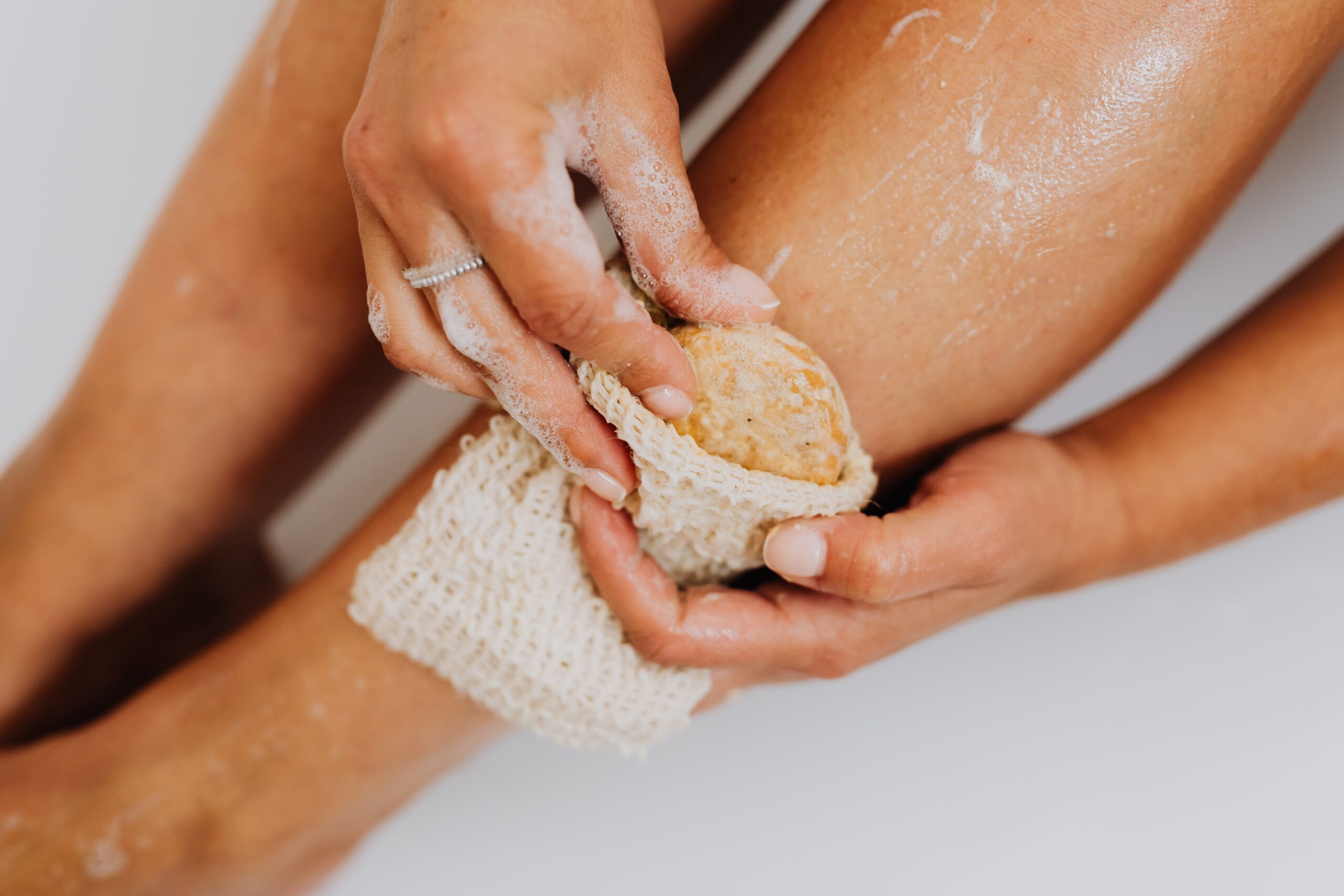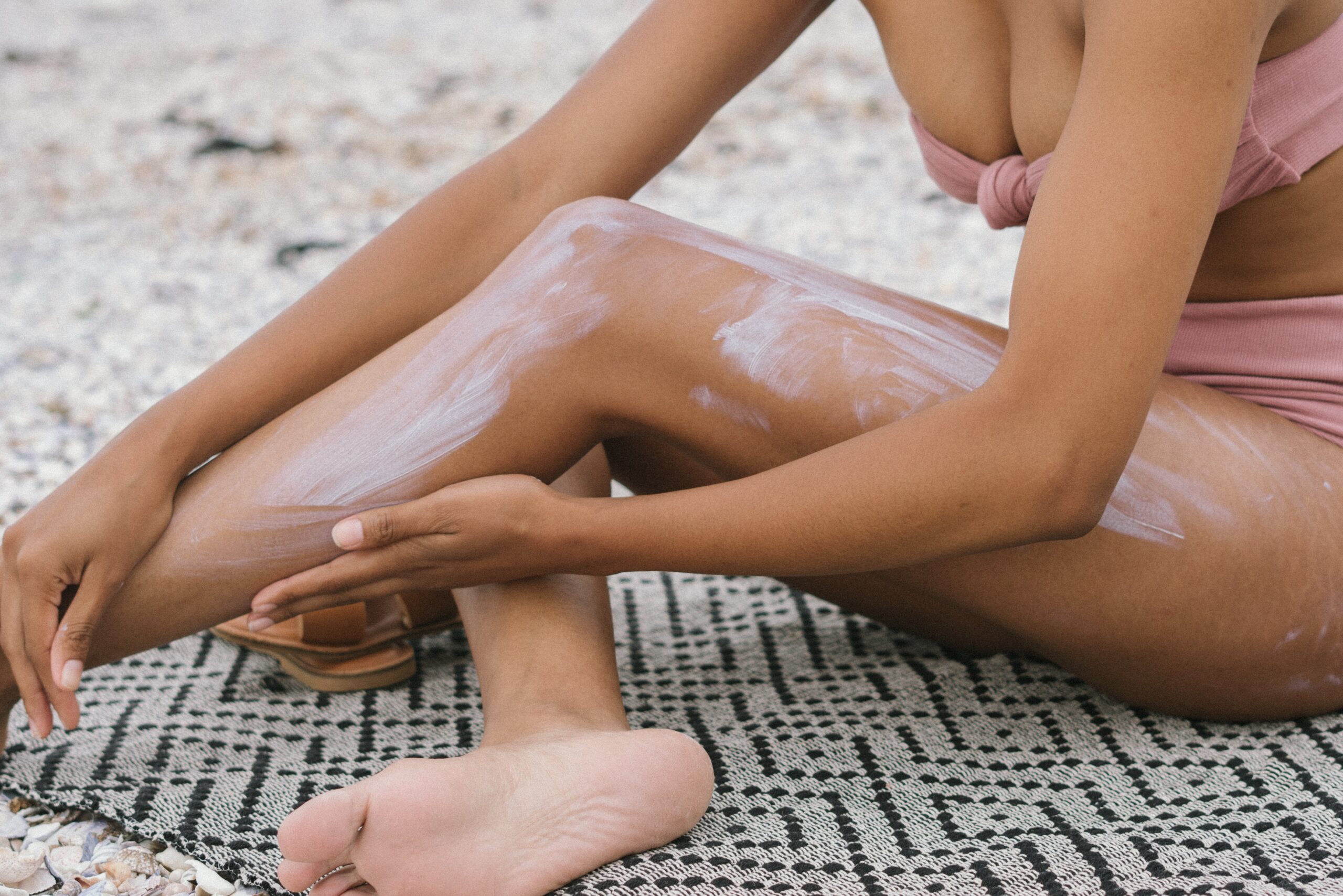It’s summertime, and you can finally take that extended holiday you’ve been planning; picture yourself strolling along deserted beaches while basking in the summer sun.
There is nothing quite like heading to the beach after sunbathing. However, the thrill of getting a tan wears off quickly once you get home from a day at the beach. Until, of course, a sunburn follows the tan, which can be painful and unwanted.
Sunbathing produces a tan that is unparalleled. But how do you avoid getting a sun tan? And is protecting yourself from sunburn with sunscreen a must?
Knowing how to avoid tanning and the benefits of sunscreen lotions will help you maintain healthy, radiant skin.
What Causes a Tan to Form on Skin?
Long periods spent outdoors expose the body to the sun’s damaging UVB and UVA rays. The sun’s rays cause the production of melanin, a dark pigment that serves as a defense mechanism and an aftereffect, protecting the skin from further damage. Tanning is the skin change caused by this increase in melanin.
Here are some measures you can take this summer to limit or prevent sunburn:
Staying Out of the Sun
Staying out of the sun is your best bet if you want to avoid getting a tan. The sun’s rays can cause your skin to darken, but prolonged exposure can lead to wrinkles if you’re not careful. When possible, stay indoors during the afternoons, use an umbrella if you must go outside, and try to avoid contact as much as possible by traveling by car.
Cleansing and Exfoliating
Regularly cleaning and exfoliating your skin is among the most effective ways to avoid sun damage without sunscreen. You should wash your face and exfoliate once or twice per week to achieve clean, healthy, and radiant skin.
Drinking Water
Consistent research has shown that consuming large amounts of water has numerous health benefits. Another way to keep your body hydrated and refreshed this summer is to drink lots of water. In addition to aiding in cell repair, drinking plenty of water can help keep you from getting as tanned.
Applying Sunscreen
Sunscreens are crucial in preventing skin cancer and premature aging by protecting the skin from UV radiation. As doctors recommend, you should wear sunscreen all year round, not just in the summer.
Although sun exposure causes tanned skin, prolonged sunbathing has been linked to skin cancer due to the sun’s ultraviolet (UV) rays, so applying sunscreen daily is highly recommended. Besides making our skin darker, it may also lead to premature aging signs like wrinkles if we continue to expose ourselves to it.
Whether going to the beach or just out to lunch on the weekend, it’s important to protect your skin from the sun by including sunscreen in your morning beauty routine. Below is a rundown of the top sunscreen lotions, perfect for your next beach trip.
Using sunscreen can prevent skin cancer and slow down the aging process. However, proper application is essential for maximum efficacy. When applying sunscreen, keep these things in mind:
- To protect yourself from both UVA and UVB rays, select a sunscreen with an SPF of 30 or higher, one that is water-resistant, and one that offers broad-spectrum coverage.
- Slather on the sunscreen before you head outside. After applying sunscreen, your skin needs about 15 minutes to absorb it fully and become protected. To prevent sunburn, you should always apply sunscreen before going outside.
- Get some good sun protection. About 1 ounce, or the volume of a shot glass, is needed to coat the average adult. Apply generously and rub it all over your skin.
- Slather some sunscreen on any exposed skin. Don’t forget about your legs, ears, feet, and neck. Ask someone to assist you in covering your back and other hard-to-reach areas.
- Wear a wide-brimmed hat or apply sunscreen on your scalp if you’re experiencing hair loss. Use a lip balm with at least 15 SPF to prevent sun damage.
- Every two hours, or right after swimming or sweating, reapply sunscreen to prevent sunburn. A sunburn usually results from inadequate sunscreen application, failure to reapply after exposure to the sun, or the use of an expired product.
Even on cloudy days and during the winter, the sun’s ultraviolet (UV) rays can penetrate clouds and reach your skin. Whether on a tropical island or just taking a brisk walk in the fall, don’t forget your sunscreen.
Wearing Protective Layers
When exposed to the sun’s UV rays, which can increase the risk of skin cancer, it’s important to take precautions such as applying sunscreen, seeking shade, and wearing sun-protective clothing.
Wearing the following helps protect the skin from the sun:
UV-Protected Sunglasses
Sunglasses are a vital piece of gear for preventing sun damage. Always ensure that any sunglasses you buy have UV-blocking lenses.
It’s important to read the label before buying sunglasses, as even lenses that appear dark may not provide any UV protection at all. Keep in mind that wraparound or large-framed sunglasses provide more protection from the sun than aviators, for instance.
Sunhat
Even if you don’t feel the effects of sunburn for several hours, it can happen within minutes. Your hair may shield your scalp somewhat, but the skin is still susceptible to heat damage. Since it’s closest to the sun, your scalp is subjected to more direct UV exposure than any other body part.
Protect your eyes, hair, and skin from the sun’s harmful ultraviolet (UV) rays by wearing a hat whenever you go outside. Sunscreen that blocks UVB and UVA rays should still be liberally applied, but a hat can provide extra protection for the ears and neck. Bigger is better when it comes to hats.
Long-Sleeved and Lightweight Shirts and Pants
When going outside, it’s best to wear clothing that covers as much as possible. Avoid wearing lace and other fabrics with an open or loose weave.
As a bonus, dark colors are safer than light ones. A long-sleeved denim shirt, for instance, has an SPF of around 1,700, whereas a white t-shirt has an SPF of around 7.
Remember that dry clothing provides more protection from the sun than wet clothing when you’re at the pool or beach. Clothing with a high ultraviolet protection factor number on the label provides greater protection from the sun.
A tan, of any degree, is considered sun damage; there is no such thing as a healthy tan. Proper sun protection is essential if you want to maintain youthful, supple skin for the rest of your life. This wide variety of effective sunscreen lotions should make it easy to find the one that’s right for you.





